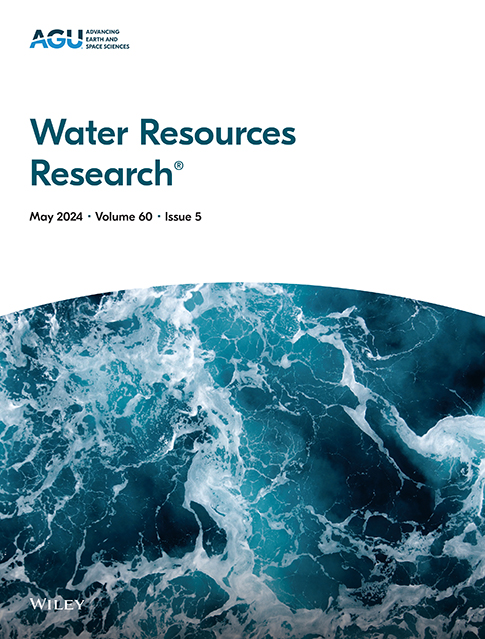二维受限弱非均质含水层中基于频率的振荡抽水水力参数敏感性图的表征
IF 4.6
1区 地球科学
Q2 ENVIRONMENTAL SCIENCES
引用次数: 0
摘要
多频振荡抽水,即在半周期内抽取地下水,然后再注入,最近被用于表征含水层非均质性。在初始跃迁时间后,在观测井处可以观测到一个稳定的周期头,其振幅和相移都是恒定的。然而,利用多频率来增强水力层析成像参数估计的有效性是有争议的。大多数研究表明,采用多频率联合反演可以逐步改善含水层成像。然而,一些研究人员认为,额外的频率对水力特性的分辨率几乎没有增加。这就提出了一个问题:多个频率能提供多少非冗余信息?在本研究中,我们利用灵敏度方程推导出二维、无界、受限弱非均质含水层振荡抽水的封闭型解析灵敏度图(即fr本文章由计算机程序翻译,如有差异,请以英文原文为准。
Characterization of Hydraulic Parameters via Sensitivity Maps for Frequency-Based Oscillatory Pumping in 2D, Confined, Weakly Heterogeneous Aquifers
Multi-frequency oscillatory pumping, in which the groundwater is extracted during a half period, and then reinjected, has recently been used to characterize aquifer heterogeneity. After the initial transition time, a steady periodic head can be observed at the observation well with constant amplitude and phase shift. However, the efficacy of utilizing multiple frequencies to enhance parameter estimation in hydraulic tomography is debatable. Most studies suggest that using multiple frequencies in joint inversion can gradually improve aquifer imaging. However, some researchers argue that additional frequencies add little to the resolution of hydraulic properties. This raises the question: how much non-redundant information do multiple frequencies provide? In this study, we derive closed-form analytical sensitivity maps (i.e., Fréchet kernels) of oscillatory pumping in 2D, unbounded, confined weakly heterogeneous aquifers by the sensitivity equation. It is found that the sensitivity maps of amplitude or phase shift are very similar to the sensitivity of drawdown to hydraulic parameters in constant-rate pumping. Fréchet kernels indicate that multi-frequency information, much like multi-time information, can be instrumental for hydrogeological parameter inversion. According to the Fréchet kernels and their derivatives, we propose a method to select the optimal observation frequency, that is, the distance between the observation well and the pumping well is converted to frequency based on the hydraulic background values. Finally, we compare the effectiveness of single-frequency and multi-frequency observations in inverse transmissivity and storativity modeling using the iterative ensemble smoother. The results show that multi-frequency oscillatory pumping can better characterize aquifer heterogeneity than a single frequency.
求助全文
通过发布文献求助,成功后即可免费获取论文全文。
去求助
来源期刊

Water Resources Research
环境科学-湖沼学
CiteScore
8.80
自引率
13.00%
发文量
599
审稿时长
3.5 months
期刊介绍:
Water Resources Research (WRR) is an interdisciplinary journal that focuses on hydrology and water resources. It publishes original research in the natural and social sciences of water. It emphasizes the role of water in the Earth system, including physical, chemical, biological, and ecological processes in water resources research and management, including social, policy, and public health implications. It encompasses observational, experimental, theoretical, analytical, numerical, and data-driven approaches that advance the science of water and its management. Submissions are evaluated for their novelty, accuracy, significance, and broader implications of the findings.
 求助内容:
求助内容: 应助结果提醒方式:
应助结果提醒方式:


